Beaver • Otter • Muskrat • Mink
Montana's Semi-Aquatic Mammal Quartet
Voices filtered through the ponderosa pines and Douglas-firs, echoing across a secluded cove in a lake. Then, in an excitable whisper at the water’s edge, a father crouched, pointed, and said, “Oh look, look, a beaver.” I sat still on the opposite shore, having come to watch the animal that had astonished me, in almost in the same way, a few weeks earlier. Sign of North American beavers—whittled sticks, canals, dams, lodges—are conspicuous, but the animals themselves are relatively quiet, nocturnal, and discreet. So take heart: you are not alone if you reflexively stop to admire the singular textures of a wetland, only to find yourself nearly submerged in surprise at the SLAAP! from the tail of the habitat’s maker.
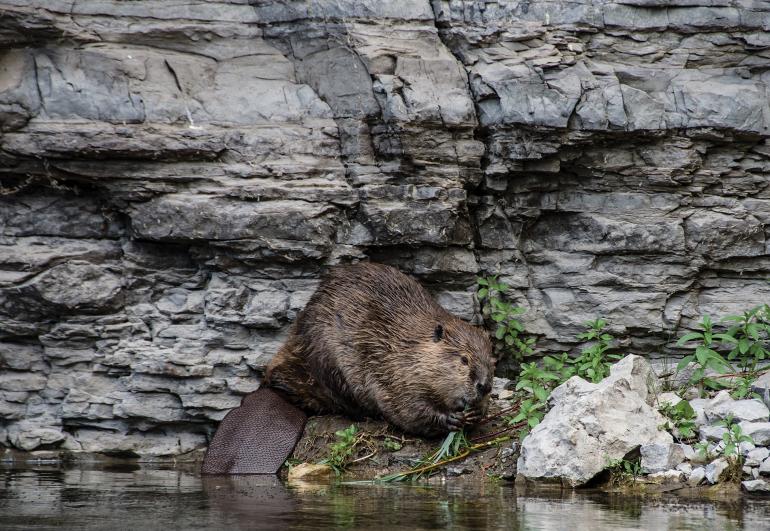
With flipper-like hind feet nearly doubling the size of their dexterous fronts, beavers walk awkwardly. Because of their clumsy biomechanics and having to re-lather in odorous, waterproofing anal gland oils, living on land is difficult. But by damming streams, beavers surround themselves in safe, predator-resistant moats that make food accessible. Their knack for lignin and cellulose digestion is nothing short of miraculous, but their construction feats are more visible: until the record was knocked by a Google Earth discovery from Alberta in 2007, Montana beavers near Three Forks had built the world’s largest beaver dam. Their marvel was longer than seven football fields, high as a tractor trailer, and wide as four grown humans laid down end to end. But there are some key differences between beaver dams and the concrete monstrosities at the likes of Hungry Horse or Fort Peck: the rodent’s work is messy, leaky, and constantly needing repair. This is not failure, or sloth. No, these imperfect, unceasing adaptations are actually how streams live.
Consider the willow, which resprouts and thrives with beaver herbivory. Or wolves, who relish the smelly rodents’ taste. Or Montana’s state fish, the westslope cutthroat trout, who benefits from the cool, complex waters that beaverworks create. These impacts make beavers quintessential keystone species upholding wetland and riparian ecosystems. And these habitats are the real treasure of the Intermountain West, covering a mere two percent of land area, but attracting a whopping 80 percent of its plants and animals. Writer Ben Goldfarb went so far as to dub beavers “ecological and hydrological Swiss Army knives,” in his recent, award-winning book Eager: The Surprising, Secret Lives of Beavers and Why They Matter. And this biodiversity benefits people, too. Many of us dwell on level floodplains prepared by beavers of yore, others are buffered with beavers’ de facto firebreaks, and almost all of us drink or irrigate with water that beavers, somewhere, have stored. So whether you’re hunting the deep woods of Beaver Creek near Condon, hiking Beaver Creek trail north of Helena, camping at Beaver Creek Park near Havre, grazing near the Beaverhead-Deerlodge National Forest, or somewhere else entirely, remember: beavers have marked more of Montana than we think.
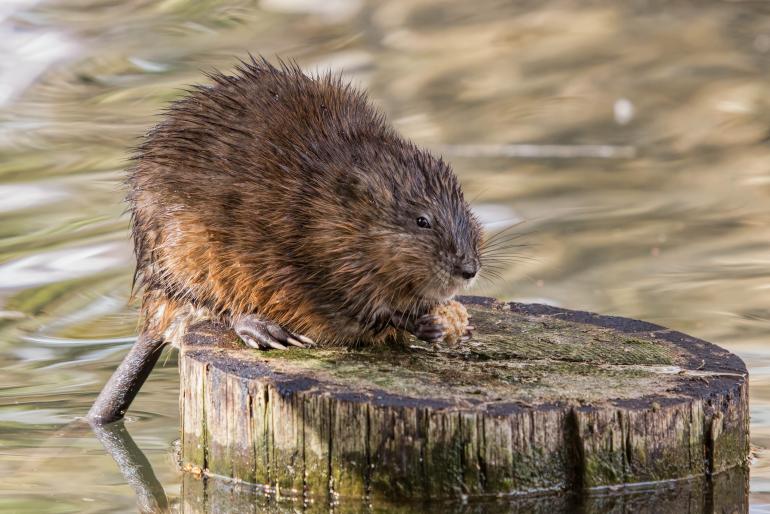
Wood-cutting beaver ancestors have sculpted the surficial geology of this continent for at least 24 million years. The Plains tribes of Montana had an especially nuanced understanding of the beavers’ niche in their arid landscapes and, aware of the consequences of removing their keystone species, the Blackfeet refused to condone the fur traders’ pogroms. This defiance led to conflict, and that conflict only deepened as the fur market switched to buffalo robes when felted beaver hats fell out of fashion. Indigenous writer and ethnobotanist Rosalyn LaPier, who teaches at the University of Montana, has described how the beaver transfers knowledge between the natural and supernatural worlds in her Blackfeet culture—knowledge needed to navigate the extremities of weather and the necessity of water east of the Rockies. Were it not for the Blackfeet’s ardent defense, Montanans today might not be able to see beavers at all.
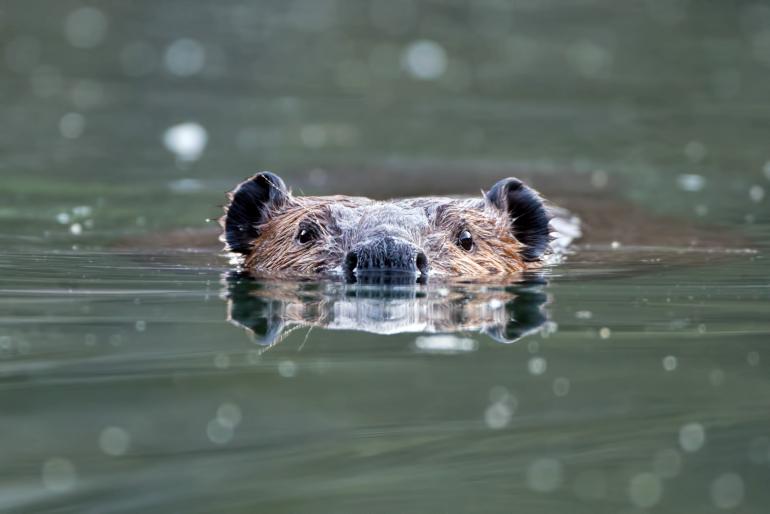
Beavers are worth the doubletake, not only because they’re returning from the brink of extinction, but because they can easily be mistaken for floating logs, or their semi-aquatic mammalian neighbors: the muskrat, American mink, and North American river otter. While muskrats are omnivorous, half the length, and at least one-tenth the weight of beavers, they’re quite beaverlike, to the point that they can live peacefully within lodges built and inhabited by their fellow rodents. The muskrat squatters don’t help with tree-felling, they do build small foraging lodges of marshy vegetation for their private browsing. These structures often radiate from a central dwelling place, about the length of a swim with one held breath, and they provide sustenance when the water is frozen. Come ice-out, the muskrats’ peanut-shaped bodies bob to the surface, with their ropy tails and tiny feet leaving an erratic wake.
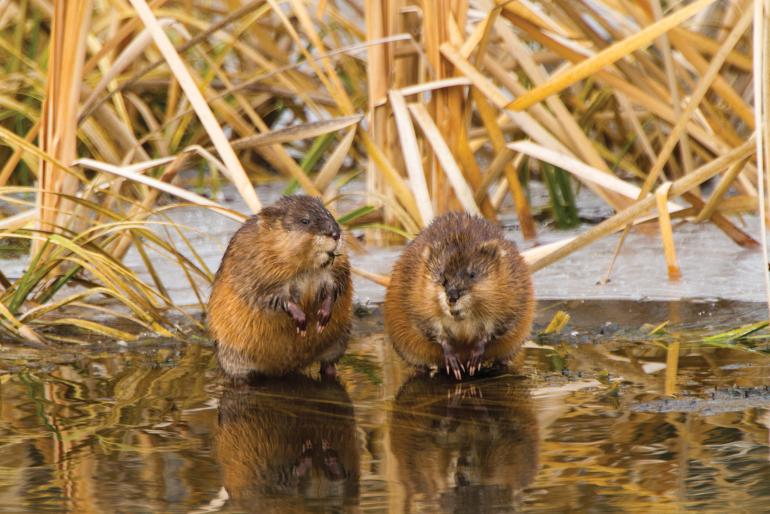
But if muskrats find a shelter with beavers, minks and otters find a supermarket. Beaver habitats are havens for all stages of aquatic insect life—plus the amphibians, fish, and birds who consume said insects – and this is a food web where otters and minks reign supreme. These long, slinky creatures hail from the weasel family, and though it’s hard to watch them without spontaneous joy, their forward-facing eyes reveal their bent for carnivory. Without the need to periscope at the surface with the wary, side-eyed view of beavers or muskrats, minks and otters frolic boldly along shore, slide down banks, or dive after meat. Their story of carnivory is also told in scat, which is long, pointy, and rank with the likes of crayfish shells, trout scales, and muskrat bones. Without the fat or lodge dependency of rodents, minks and otters must roam constantly in search of calories to meet the high energy demands of their hypothermic habitat. They even exhibit a unique reproductive strategy called delayed implantation, where gestation may be suspended for at least eight months (in otters), when blind babies can emerge in more favorable environmental conditions. Minks are fairly solitary, but for otters, a lot comes back to poop, given that communal “latrines” are key social hubs for learning about the sex, dominance status, and food resources of otters nearby. Otters bond with mates and kin over these scat heaps, and their offerings are often pat down with stamping back feet, a mysterious little poop dance that seems to affirm who’s who.

Biodiversity can be clunky term, but the existence of Montana’s semiaquatic mammal quartet is a priceless gift, with each species present across most of the state. From air-trapping fur to water-excluding nostrils to marvels of ecosystem engineering, these creatures are adapting to niches far from our own. And yet, the more we learn about conserving our rare, vital streams and wetlands, the more we’re realizing the biodiversity we need might have a simplified spelling: B-E-A-V-E-R. Montanans are taking notice, and efforts are underway around the state to survey and restore beaver habitat, entice natural re-beavering with low-tech “beaver dam analogues”, and resolve conflicts with proven nonlethal tools. Beavers have shaped our state’s past and, as Montana’s climate gets drier, hotter, and generally more extreme, they’ll have an increasing role in our resilient future. If you get the chance to see this keystone species swim by, iceberg-like, you can trust that, below the surface, beavers are keeping Montana wild and wet.
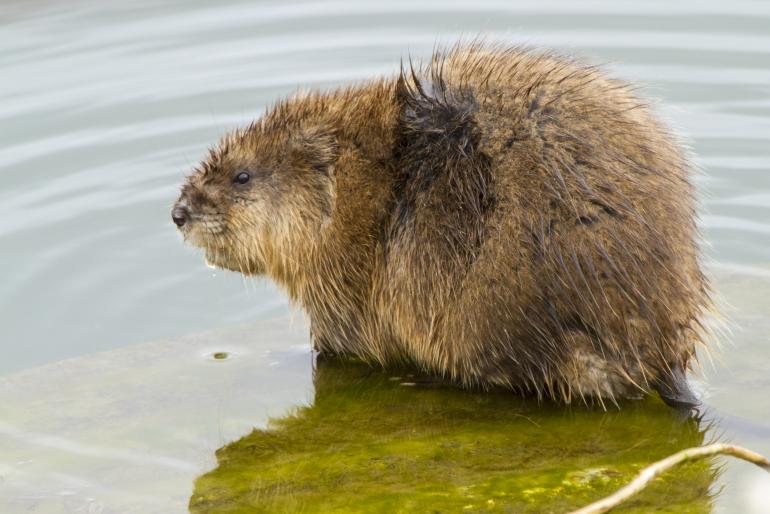





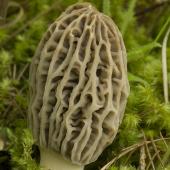
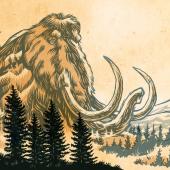
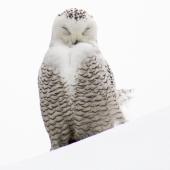
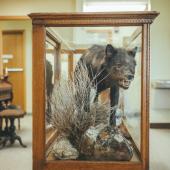
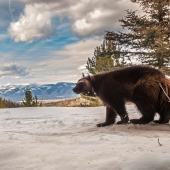
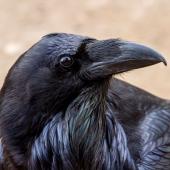

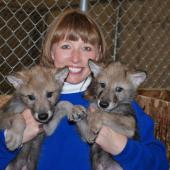

- Reply
Permalink